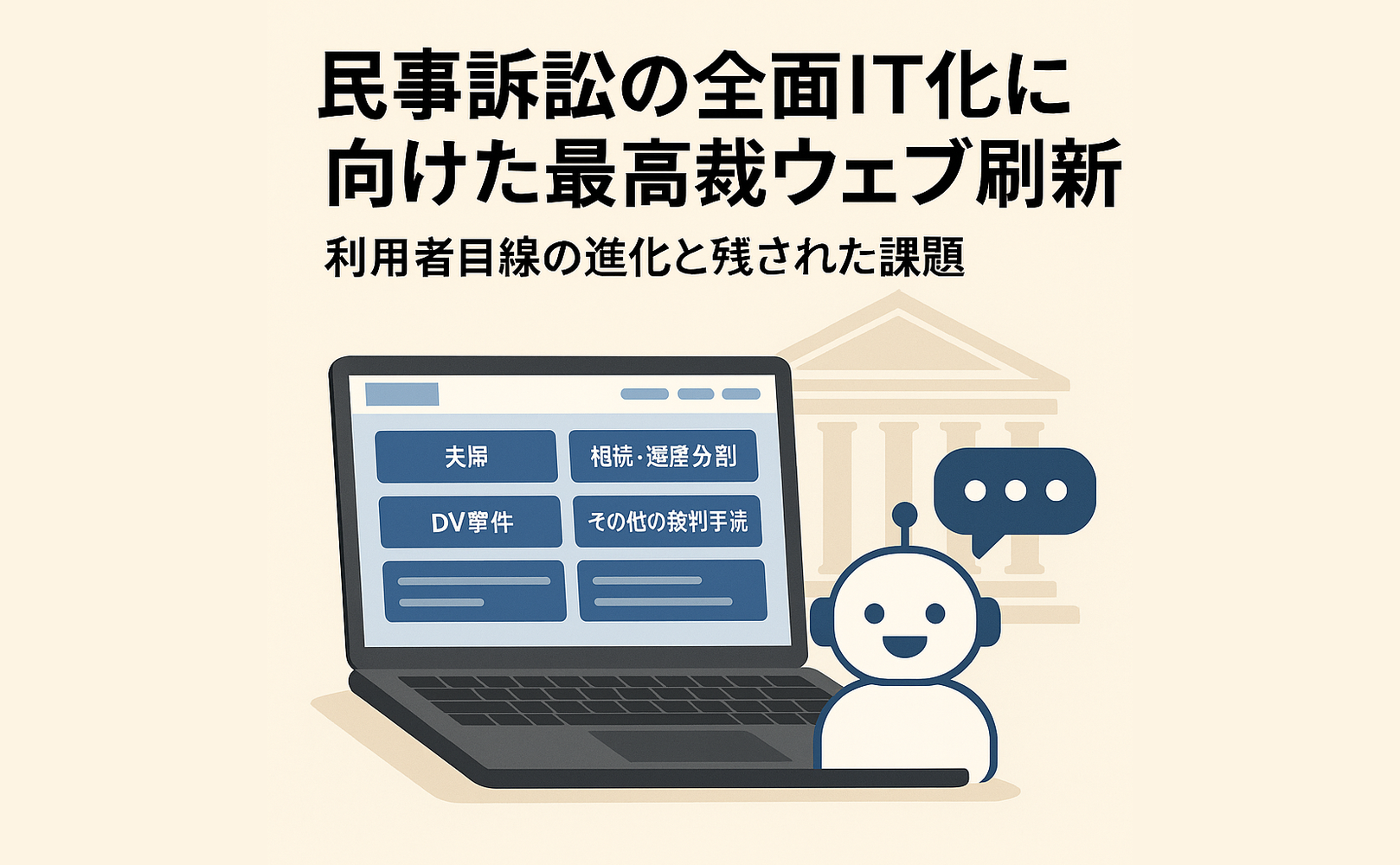Introduction
The revised Civil Procedure Act, scheduled for full implementation by May 2026, marks a major milestone in the “digitalization of the judiciary,” enabling all procedures from the filing of a complaint to the delivery of a judgment to be completed online. In anticipation, the Supreme Court has revamped its official website. This redesign focuses on improving access to information and providing navigation support through a chatbot.
Information Integration and User-Centered Design
The top page now features eight categories with the highest number of inquiries, such as “Marriage,” “Inheritance & Division of Estates,” and “Domestic Violence Cases,” consolidating related sample petitions and procedural flows. Previously scattered information has been unified, making it much easier for citizens unfamiliar with court procedures to find relevant content intuitively—an important step forward.
In addition, resources such as those of the Intellectual Property High Court and the Lay Judge System have been integrated, symbolizing a “one-stop” consolidation of previously fragmented sites.
The Significance and Limits of Chatbot Introduction
The newly introduced chatbot guides users to relevant pages and procedural options based on the trouble they input. This serves as a helpful tool for people without legal expertise to determine “which procedure applies to their case.”
However, since responses are limited to pre-registered content, the system inevitably has limitations in handling complex or exceptional cases. There is room for improvement in the future, such as leveraging generative AI to enhance flexibility.
The Significance of IT Implementation and Remaining Issues
The full implementation of online procedures will significantly “lower the threshold for litigation” for citizens. In particular, it brings substantial benefits to those living far away or facing time constraints, as it reduces costs associated with travel and postal services.
On the other hand, addressing the digital divide remains a challenge. Support systems for elderly users and those unfamiliar with IT environments, UI design that considers accessibility, and enhanced security are necessary to build a judicial IT infrastructure that is truly “accessible to everyone.”
Conclusion
This website renewal is only the prologue to the “DX of the judiciary.” Nevertheless, the user-oriented design and introduction of a chatbot show clear signs of a shift away from the traditional “hard-to-understand court websites.” Looking ahead to the full implementation in 2026, much attention will be paid to how far accessibility and actual usability can be advanced in parallel.

